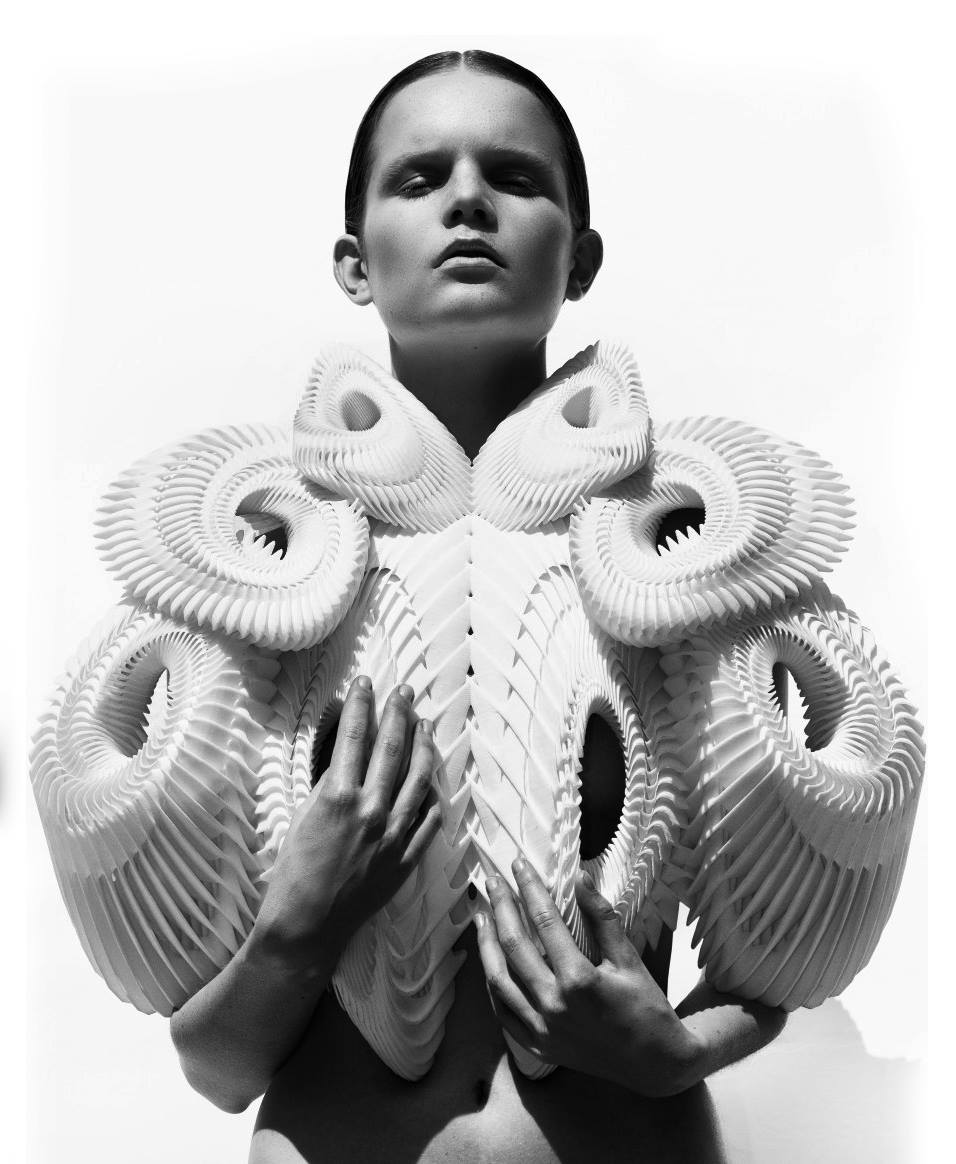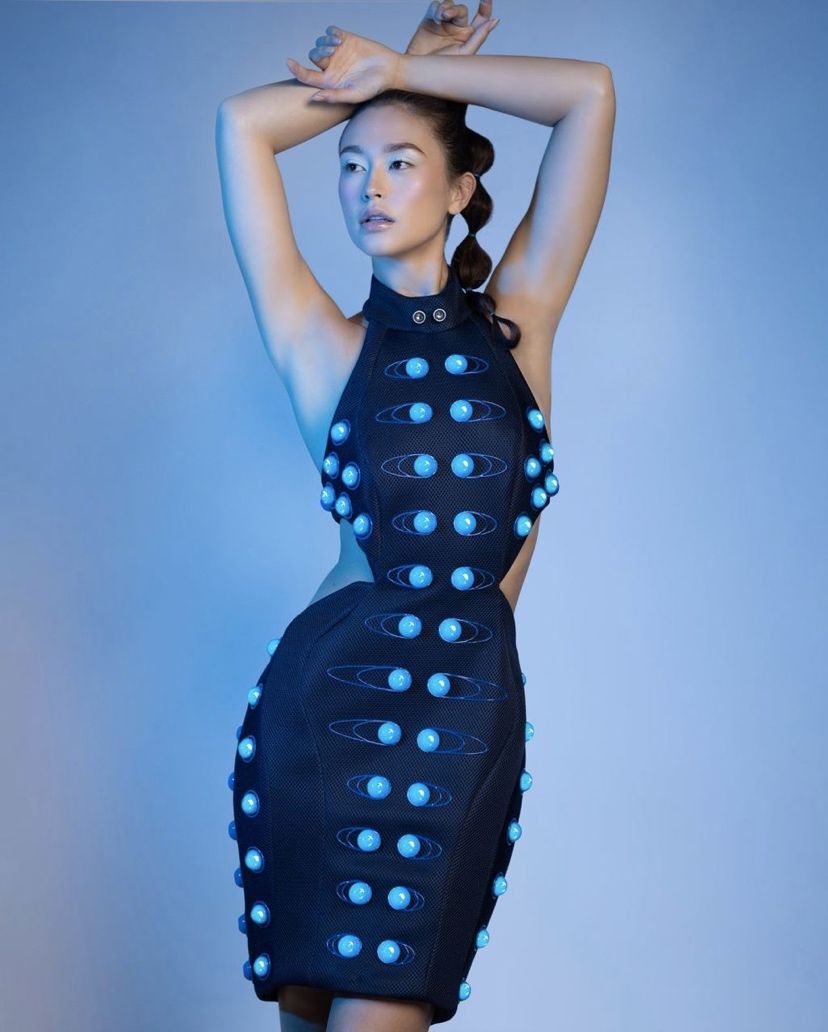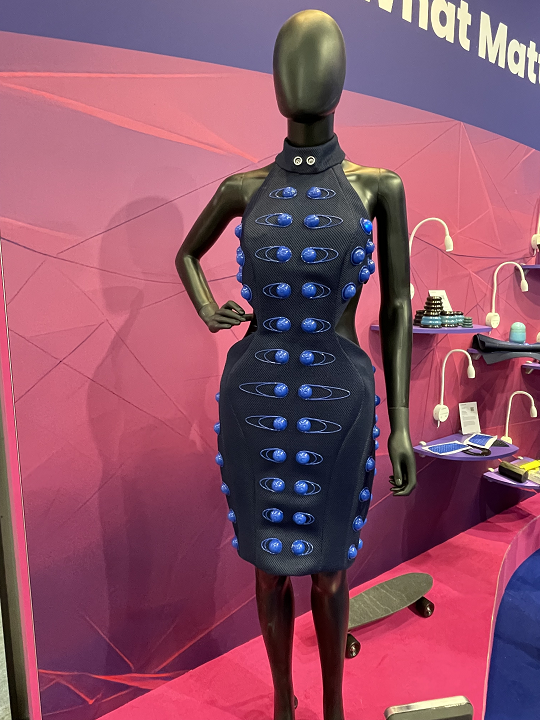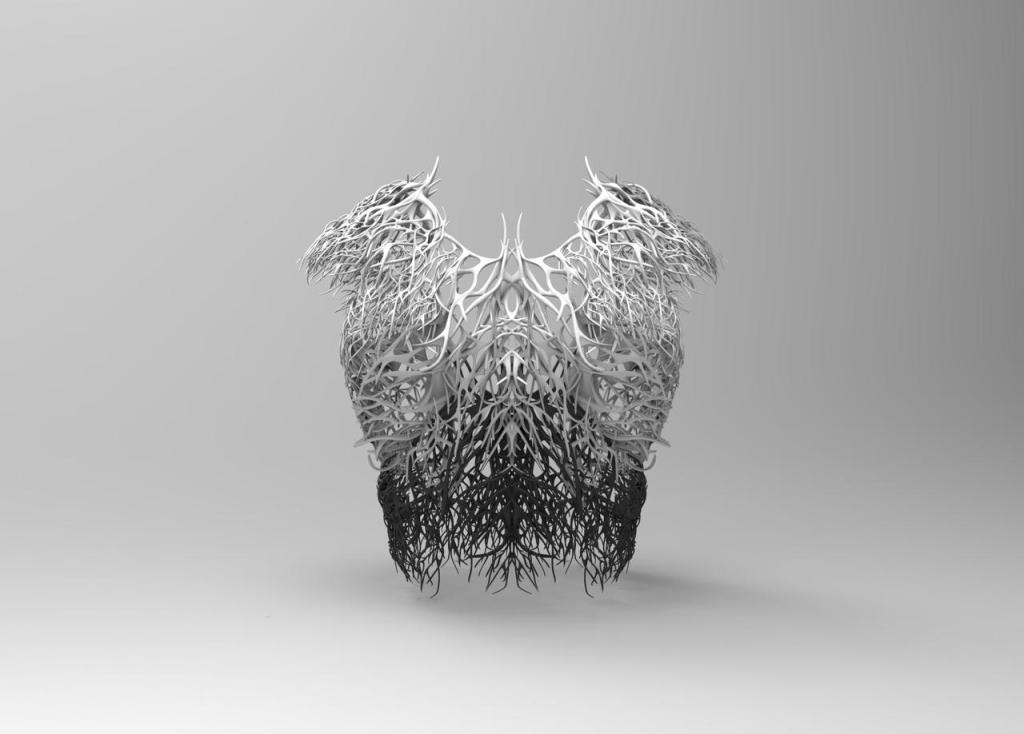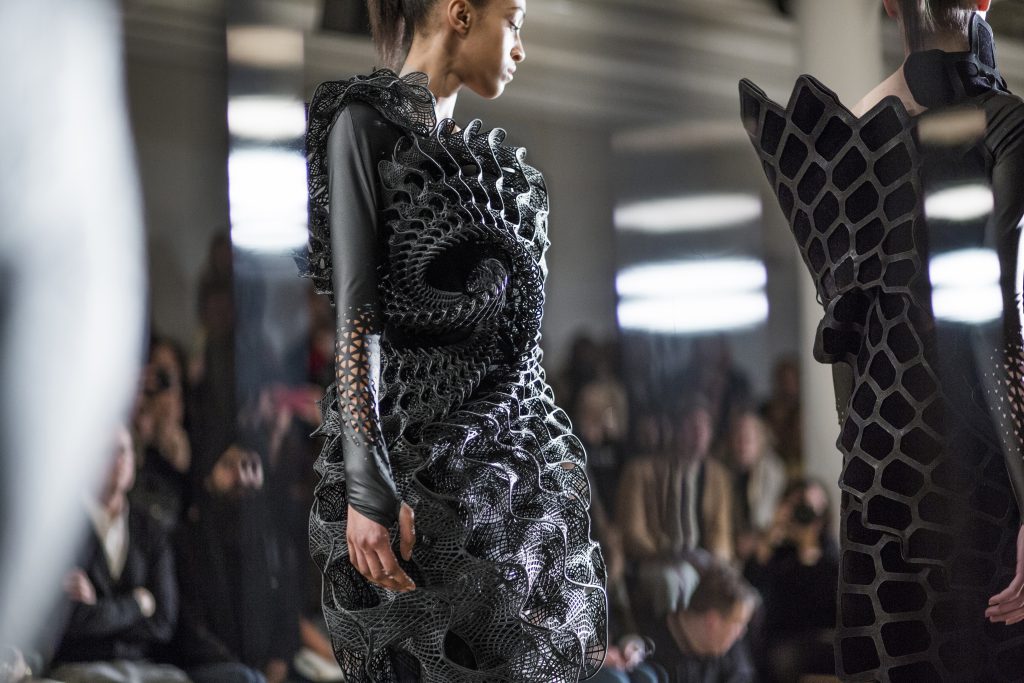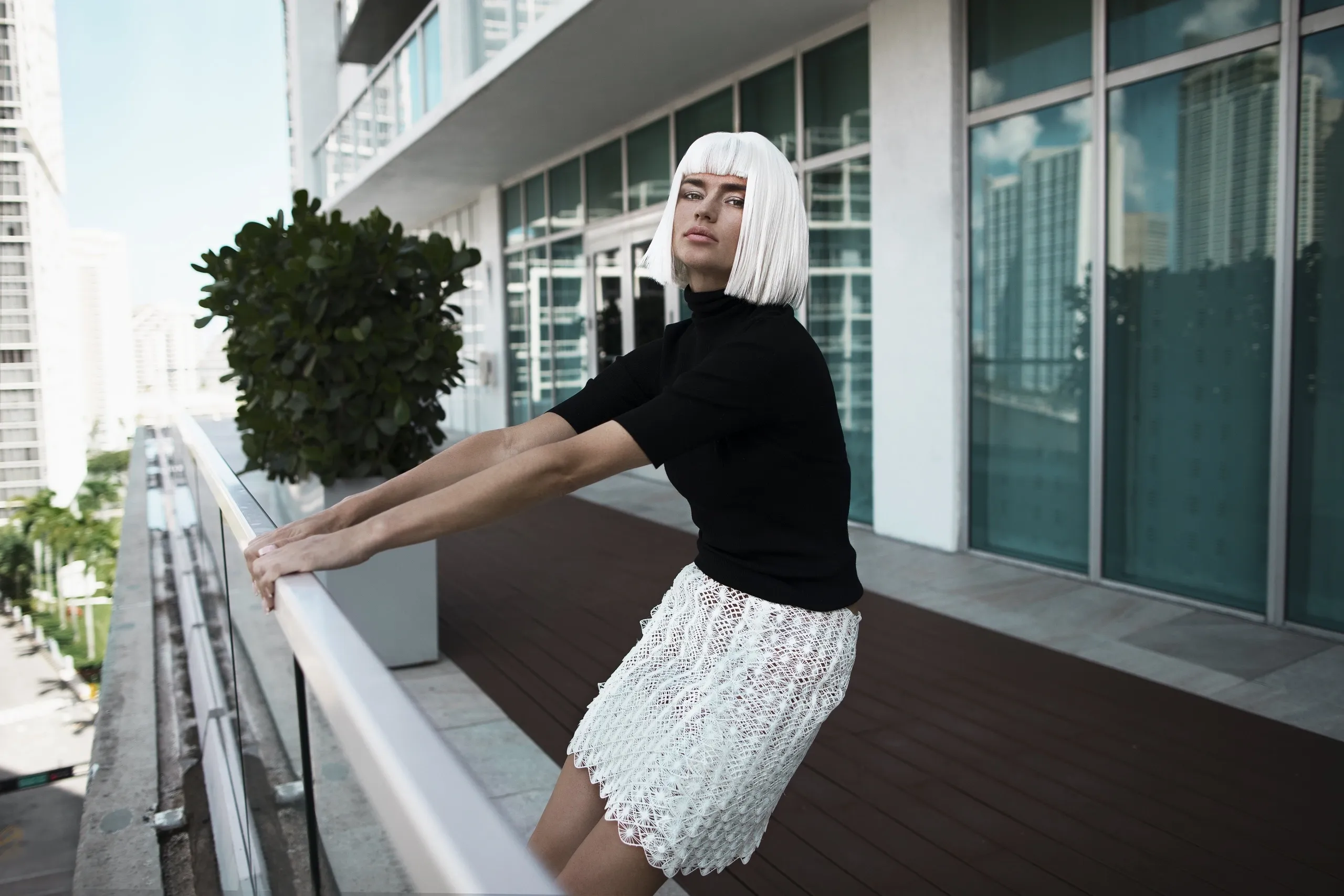Fashion’s visionaries never stop exploring new horizons, blending the latest technology with classic elegance. This tradition of innovation is not new. Historically, fashion icons pioneered the use of contemporary technologies and materials of their times. Coco Chanel reimagined jersey fabric for luxury wear in the 1910s, while Gianni Versace’s avant-garde use of materials like chainmail, known as Oroton, became a signature of his collections in the 1980s; and Prada’s decision to use nylon, a material then associated with parachutes and tents, in high-fashion items, paved the way for today’s designers, who continue to push the envelope with technology in fashion design.
Among these explorations, 3D printing has emerged as a groundbreaking tool, allowing the creation of garments that were once thought impossible and introducing the possibility of wearable art. From the avant-garde runways of Amsterdam to the glamour of the Met Gala, we have chosen ten pieces at the intersection of technology and haute couture, blending science and creativity to create visually unique garments.
Iris van Herpen’s Crystallization Top
Unveiled at Amsterdam Fashion Week in 2010, Iris van Herpen‘s pioneering Crystallization top is considered among the first 3D printed couture pieces ever displayed on a runway. Inspired by the intricate structures of shells, this white polyamide masterpiece imitates the geometry of nature, combining organic forms with high-tech fashion. This piece not only showed the potential of 3D printing early on but also set a high bar for what could be achievable in textile innovation. The top is part of the “Crazy History of Design” permanent collection at The Museum of Decorative Arts (Mad Paris), located in the western wing of the Louvre Palace.
Anouk Wipprecht’s Light-Up Dress at Formnext
In collaboration with Chromatic 3D, Dutch designer Anouk Wipprecht‘s light-up dress is quite spectacular. Considered a statement on the potential of wearable technology, the piece illuminates, both literally and figuratively, the crossroads of fashion and 3D printing. Wipprecht is known for combining fashion with technology, robotics, and interaction design, creating garments that interact with the person wearing them and the environment. For this dress, Wipprecht used 3D printing to adhere nearly 75 flexible LED domes to the fabric without adhesive or stitching, making the garment respond to its environment through the LEDs. It was showcased at the last Formnext event in Germany in 2023.
Julia Koerner’s Exploration of 3D Printed Nature in Fashion
Aside from her work on the costumes for Marvel blockbuster Black Panther, Austrian designer Julia Koerner is known for creating some of the most eye-catching pieces, like the Kelp Jacket. As part of her collaboration with Stratasys for the “Multi-Color, Multi-Material 3D Printing” collection, this piece shows her ability to create complex, organic structures using 3D printing. The Kelp Jacket is a great example of how 3D printing can help create wearable art that pushes the boundaries of traditional fashion and textiles. Koerner’s work consistently explores the intersection of biology, material science, and digital fabrication techniques, setting her apart in innovative design.
ThreeASFOUR’s Harmonograph Dress
The Harmonograph dress from ThreeASFOUR‘s “Biomimicry” explores how biological forms and natural morphologies can be replicated in a fashion context with 3D printing. It is inspired by natural harmonic vibrations and showcases the delicate balance between nature’s randomness and the precision of digital fabrication. Revealed in 2016, the 3D printed dress was the first demonstration of Agilus30 material from Stratasys in VeroBlack, which has extreme flexibility and durability. Printed with the Objet500 Connex3 3D printer from Stratasys, the design, like many other 3D printed dresses, is futuristic. Its armor-like quality, with a structured bodice and shoulder pieces similar to protective gear that a futuristic warrior might wear, could be reminiscent of a heroine ready for a high-tech dystopian scenario, like the ones in futuristic films like Blade Runner or Tron. While this piece is most likely intended for the haute couture runway rather than everyday wear, who wouldn’t want to try it?
Julia Daviy’s 3D Printed Skirt
In 2018, Julia Daviy changed the game with her 3D printed skirts, proving that high tech can stylishly meet high fashion. Using selective laser sintering (SLS), she created a skirt that looks fabulous and is made sustainably. Part of a larger collection that showed the potential for 3D printing in creating sustainable and wearable fashion, Julia Daviy’s 3D printed pleated skirt is visually creative and crafty. Its “runway-ready” look is the result of a marriage between the classic elegance of pleats and 3D printing. She is proving that the future of fashion can be beautiful and practical. Running with the motto “leading with sustainable innovations,” nothing about Daviy’s designs is left to chance and proves that the future of fashion is both beautiful and practical.
Sylvia Heisel’s NAMEDRESS
The NAMEDRESS is a tribute to women in STEM. Created from compostable bioplastic through zero-waste 3D printing, Sylvia Heisel‘s creation is more than just a garment; it’s a statement on sustainability, innovation, and the recognition of women pioneers in science and technology. It’s hard to pick one of Heisel’s designs because her portfolio is packed with stunning garments. From dresses that make bold statements to coats so bespoke you’d never want to take them off, each piece is designed to leave a lasting impression. Heisel’s approach combines fashion with function, ensuring that every item isn’t just a piece of clothing but an idea of what’s possible when creativity meets green thinking.
Asher Levine’s Dragonfly Wing Bodysuit for Grimes
Worn by Grimes in her “Shinigami Eyes” music video released in 2022, the dragonfly wing-inspired bodysuit was created by designer Asher Levine and generative design studio Nervous System of Jessica Rosenkrantz and Jesse Louis-Rosenberg. A mix of biology, art, and music, the biomimetic design of the suit captures the ethereal and cutting-edge that has been present throughout Grimes’ career. The manga-inspired video was an ideal springboard for Levine’s custom-made nude scale-print, lit-up bodysuit.

Grimes (left) and K-Pop artist Jennie Kim (right) during the music video of Shinigami Eyes. Still from the music video “Shinigami Eyes”/Columbia Records.
“At the time, I was working on Tetra and it was this new style that blends the boundaries between digital and tangible fashion,” Levine explained. “The Tetra print is inspired by dragonfly wing architecture, so we did a computationally generated scale print, and we customized it with a cool, unique print.”
Behnaz Farahi’s Iridescence Emotive Collar
Commissioned by the Museum of Science and Industry Chicago for “Wired to Wear,” the Iridescence collar is a bespoke creation of design and technology. This 3D printed piece is an interactive collar inspired by the feathers around the throat of the Anna hummingbird. The garment is equipped with a facial tracking camera and an array of 200 rotating quills that flip their colors and start to make patterns in response to the movement of onlookers and their facial expressions. For the artist, the goal of Iridescence is to explore “how wearables can become not only a vehicle for self-expression, but also an extension of our sensory experience of the world.”
Trained as an architect, Behnaz Farahi explores the potential of interactive environments and responsive garments. Her work focuses on how the body can interact with the surrounding space through movement, and she has created several pieces of 3D printed fashion that respond to the movements or even the emotional state of the person wearing them.
Zac Posen’s Rose Petal Gown for the Met Gala
One of Zac Posen‘s 3D printed gowns for the Met Gala was a vision in petals. We’re talking about the masterpiece designed for the 2019 New York star-studded event called the “Rose Gown.” Worn by British model Jourdan Dunn, the bespoke design featured 21 unique overlapping petals, each around 50 centimeters and weighing 450 grams. Each petal took around 100 hours to print using a stereolithography machine at Protolabs’ facility in North Carolina and is estimated to be worth around $3,000. A collaboration between Posen, Protolabs, and GE Additive, the printing and finishing process of the entire dress took more than 1,100 hours and involved printing the petals in white plastic, priming them, and then spraying them with color-shifting paint commonly used for cars, the finish was a clear gloss that gave it an impeccable vibe of haute couture and high-tech beauty and complexity.
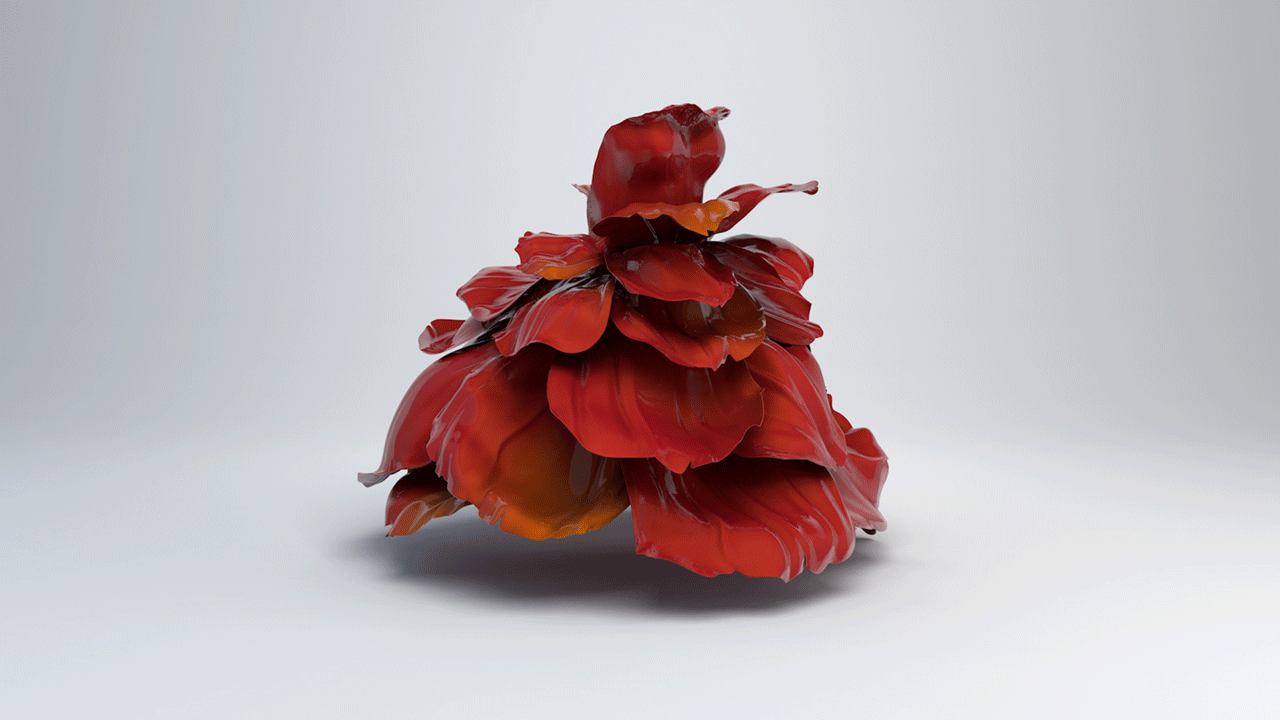
While many 3D printed designs have a science fiction look with cutting-edge geometries, Posen’s design went for a more glam, lavish, and organic look. Posen told the New York Times: “Mother Nature can be simple, abstract, challenging, and campy, in ways that are surprising, shocking…You can’t beat Mother Nature. You can just homage.”
Ashley Alleyne’s 3D Printed Vest at AMS 2024
A standout at the Additive Manufacturing Strategies (AMS) 2024 conference, Ashley Alleyne‘s 3D printed vest showcases her multifaceted talent as a designer, 3D modeler, and fashion photographer. This piece is a bold statement on the creativity possible today, where designers can imagine, create, and wear their innovations. Made just four days before AMS 2024, Alleyne 3D printed the vest at home using her FDM printer. The red pocket has three scrap designs that tie the piece in and make it ideal for carrying a small camera or phone. Given her knack for originality, we can’t wait to see what Alleyne will create for AMS 2025.
Subscribe to Our Email Newsletter
Stay up-to-date on all the latest news from the 3D printing industry and receive information and offers from third party vendors.
You May Also Like
Gorilla Sports GE’s First 3D Printed Titanium Cast
How do you help a gorilla with a broken arm? Sounds like the start of a bad joke a zookeeper might tell, but it’s an actual dilemma recently faced by...
Nylon 3D Printed Parts Made More Functional with Coatings & Colors
Parts 3D printed from polyamide (PA, Nylon) 12 using powder bed fusion (PBF) are a mainstay in the additive manufacturing (AM) industry. While post-finishing processes have improved the porosity of...
$25M to Back Sintavia’s Largest Expansion of Metal 3D Printing Capacity Since 2019
Sintavia, the digital manufacturing company specializing in mission-critical parts for strategic sectors, announced a $25 million investment to increase its production capacity, the largest expansion to its operations since 2019....
Velo3D Initiates Public Offering in a Bid to Strengthen Financial Foundations and Drive Future Growth
Velo3D (NYSE: VLD) has been among a number of publicly traded 3D printing firms that have attempted to weather the current macroeconomic climate. After posting a challenging financial report for 2023,...


